The 10 Most Popular Remote Jobs (and how to get started)
Imagine you didn’t have to pick between your career and traveling the world. Thanks to technology, you can now work remotely from anywhere in the world. If you’ve been thinking about getting a remote job and are unsure how to get started, here is a list of 10 of the most popular remote jobs.
Keep in mind, just because this list is of the most popular remote jobs out there, it doesn’t mean there aren’t other remote job roles and industries that hire remotely. For example, in my other blog post, How Digital Nomads Actually Make Money I include the various ways you can earn an income remotely.
This list was created using a combination of:
My personal experience working remotely since 2015, and what I see as the most popular jobs out there.
The most popular search results from remote job boards.
Some quick online research.
1. Developer / Software Developer / Programmer
Developers are the people behind building websites, apps, and tools we all rely on — and they can do it all from their laptops. If you know how to code (or want to learn), this is one of the most in-demand and high-paying remote roles out there. Whether it’s front-end, back-end, or full stack, companies are always looking for tech talent
How to get started: Start with HTML, CSS, and JavaScript using free platforms like freeCodeCamp (A free, beginner-friendly program that teaches HTML, CSS, JavaScript, and backend basics) or The Odin Project. Contributing to open-source projects or building your own apps is a great way to get noticed.
Remote Career Path Trajectory: Junior Developer – Software Developer – Senior Developer or Engineering Lead
Top skills needed: Problem solving, logical thinking, attention to detail, communication, time management
Top tools and tech to learn: JavaScript, Git and GitHub, React or Vue, VS Code, Node.js
2. Graphic Designer (UI/UX Designer)
Have a good eye for visuals? Graphic designers help bring brands to life, from logos and social posts to websites and marketing materials. It’s not just about making things look pretty (though that helps); it’s about creating visuals that actually communicate something.
There’s also a growing overlap between graphic design and UI/UX design (that’s user interface and user experience). UI/UX designers focus on how things look and function, especially when it comes to websites, apps, and software. They’re thinking about how users navigate a page, what they click on, and whether the experience feels seamless or frustrating. If you’re interested in the intersection of design and psychology, this might be a path to explore.
A lot of designers work remotely as freelancers or part of distributed teams, using tools like Figma, Adobe Creative Suite, and Canva. If you’re both creative and tech-savvy, and you like the idea of turning ideas into visual stories, this one’s a solid option.
How to get started: Build a portfolio by designing social posts, logos, or website mockups. Share your work on platforms like Behance and Dribbble. If you’re exploring UI/UX, try Daily UI challenges or redesign real websites for practice. Check out Coursera: UI/UX Design Certificate by Google. No experience is needed, and it;s great for understanding the design-thinking process used in UI/UX.
Remote Career Path Trajectory: Junior Designer or UI/UX Intern – Graphic Designer or UI/UX Designer – Sr. Graphic Designer or Sr. UI/UX Designer – Creative Director or Product Designer
Top skills needed: Creativity, visual storytelling, typography, user empathy, feedback integration
Top tools and tech to learn: Figma, Adobe Illustrator, Canva, Sketch, Adobe Photoshop
3. Online Marketing Manager
This umbrella term covers things like SEO, paid ads, email marketing, social media, and content strategy. If you’ve ever Googled something and clicked a sponsored result, yep, that’s digital marketing at work. It’s part creative, part analytical, and very remote-friendly. Especially ideal if you love experimenting, measuring results, and figuring out how to help people find stuff online. If you’re looking to get started, check out HubSpot’s free marketing certification. It’s free and comprehensive, covering content, SEO, email, and paid ad fundamentals.
How to get started: Offer social media help or content writing to small businesses or solopreneurs. Take free marketing certifications from HubSpot or Google Digital Garage to build foundational knowledge.
Remote Career Path Trajectory: Marketing Assistant or Coordinator – Digital Marketing Specialist or Manager – Head of Marketing or Growth Lead
Top skills needed: Writing, data analysis, strategic thinking, creativity, SEO knowledge
Top tools and tech to learn: Google Analytics, Meta Ads Manager, HubSpot, SEMRush, Mailchimp
4. Copywriter
Writers, this one’s for you. Copywriters create everything from website copy and sales pages to email sequences and blog posts. If you can write clearly and persuasively, and understand how to connect with a specific audience. This is a great role to work remotely. Pro tip: strong copy is always in demand, especially in the online business world.
How to get started: Start your own blog or contribute to newsletters and LinkedIn posts. Try small freelance gigs or ghostwriting to build samples while improving your persuasive writing. Also, check out Copy School by Copyhackers. Taught by one of the best in the biz, this is a go-to for persuasive writing and online copy skills.
Remote Career Path Trajectory: Content Writer or Junior Copywriter – Copywriter or Conversion Copywriter – Content Lead or Creative Director
Top skills needed: Writing clarity, persuasion, audience awareness, research, editing, SEO
Top tools and tech to learn: Grammarly, Google Docs, Notion, Surfer SEO, Hemingway App
5. Sales Associate / Sales Representative
Sales, the lifeline of any business. Without sales, businesses simply wouldn’t exist. If you’re a natural communicator (and don’t shy away from goals), remote sales roles might be your thing. Think: software companies, online tools, or services that need people to reach out to leads or close deals over Zoom, email, or phone. It’s often commission-based, but there’s real earning potential here, especially if you’re good with people and can stay organized.
How to get started: Look for entry-level SDR (Sales Development Rep) roles that focus on outreach. You can also check out HubSpot Sales Enablement Certification, which covers prospecting, handling objections, and closing deals, all in a remote sales setting. These positions often come with training and a clear career path. You can also check out Aspireship’s SaaS Sales Training Course.
Remote Career Path Trajectory: Sales Development Rep (SDR) – Account Executive or Sales Rep – Sales Manager or Account Director
Top skills needed: Persuasion, relationship building, resilience, listening, follow-up discipline
Top tools and tech to learn: Salesforce, HubSpot, Loom, Outreach, Slack, CRMs
Grab my free Remote Career Playbook to discover 6 proven steps to land a remote job you love — no guesswork, just real results.
6. Customer Success Manager (CSM)
A Customer Success Manager’s job is to make sure clients are happy, supported, and getting real value from the product or service they’ve signed up for. Think of it as part support, part strategy, part relationship-building. CSMs check in with customers, help them reach their goals, solve problems before they escalate, and often play a key role in renewals or upsells. It’s especially common in the SaaS world, and very remote-friendly, perfect if you’re a people person who’s also great at systems and follow-through.
How to get started: Start in a customer support or onboarding role. You can check out Aspireship’s Customer Success Certificates.
Remote Career Path Trajectory: Customer Support or Onboarding Specialist – Customer Success Manager – Head of Customer Success or Client Experience Lead
Top skills needed: Relationship management, problem solving, empathy, communication, product knowledge
Top tools and tech to learn: Zendesk, Intercom, HubSpot, Slack, Notion
7. Executive Assistant
An Executive Assistant is the ultimate right-hand person. They help busy leaders stay on top of their day-to-day, from managing calendars and inboxes to prepping meetings, booking travel, and handling internal comms. It’s less about checking boxes and more about anticipating needs, solving problems before they happen, and keeping everything running smoothly behind the scenes.
While it’s definitely a remote-friendly role, it tends to be U.S.-based more often than not. That’s usually because execs want someone in the same time zone who’s familiar with local business culture, especially when it comes to scheduling, confidentiality, and fast turnarounds.
How to get started: Look for virtual assistant roles to get experience with scheduling, inbox management, and basic support tasks. Then transition into an EA role with more responsibility. Check out Skillshare or Udemy Courses such as Executive Assistant Professional Certification (EAPC).
Remote Career Path Trajectory: Virtual Assistant or Admin Assistant – Executive Assistant – Chief of Staff or Operations Manager
Top skills needed: Organization, discretion, calendar management, written communication, multitasking
Top tools and tech to learn: Google Workspace, Calendly, Zoom, Slack, Trello
8. Product Manager
Product managers are the ones steering the ship, bringing together teams like dev, design, and marketing to build products people actually want to use. They’re constantly asking, how can we make this better? Whether it’s adding new features, solving user pain points, or prioritizing updates based on research and feedback, they’re at the center of the decision-making process. It’s a more advanced role, but super remote-friendly since most of the work happens through async tools like Notion, Jira, and Slack.
How to get started: Begin as a product analyst, QA tester, or project coordinator to get exposure. Collaborating with startups or building mock products can help you learn fast. You can check out the Product Management Certificate by General Assembly
which is great for understanding roadmaps, feature prioritization, and cross-functional leadership.
Remote Career Path Trajectory: Product Analyst or Associate PM – Product Manager – Senior PM or Head of Product
Top skills needed: Strategic thinking, user empathy, prioritization, cross-functional communication, decision making
Top tools and tech to learn: Notion, Jira, Miro, Figma, Google Analytics
9. Project Manager
Project managers are the organized ones keeping everything (and everyone) on track. They make sure deadlines are met, tasks are moving forward, and chaos stays far, far away. Let’s say a client wants a new website built: the project manager would map out the timeline, set the budget, assign tasks to the team, and keep everyone aligned from start to finish. They’re also the point of contact for client updates, feedback, and progress check-ins. If you love juggling moving parts, organizing all the things, and checking boxes off your to-do list, this might be your sweet spot. Remote PMs are often the glue that holds distributed teams together.
How to get started: Look for project coordinator or operations assistant roles. Freelance coordination gigs can also build experience with tools and processes. If you’re interested in taking a course on Project Management, consider Google Project Management Certificate (Coursera). It’s beginner-friendly and designed to prepare you for real-world remote PM roles.
Remote Career Path Trajectory: Project Coordinator – Project Manager – Program Manager or Director of Operations
Top skills needed: Organization, communication, time management, problem solving, attention to detail, risk assessment, budgeting
Top tools and tech to learn: Asana for Project Management, ClickUp, Trello, Google Sheets, Slack
10. Talent Acquisition Specialist / Recruiter
Recruiters are the matchmakers of the remote work world. Their job is to find, screen, and guide great candidates through the hiring process, all while representing a company’s values and culture. From writing job descriptions and reviewing resumes to scheduling interviews and negotiating offers, they’re a key part of building strong teams. This role is especially remote-friendly since most communication happens over email, Zoom, and LinkedIn. If you love people, organizations, and making great connections, this might be your lane.
How to get started: Start as a recruiting coordinator or sourcing assistant to get familiar with scheduling, candidate outreach, and interview logistics. Entry-level contract roles are often available through staffing agencies or internal talent teams. To build your skillset check out Learning LinkedIn Recruiter. It covers sourcing, interview coordination, and using LinkedIn Recruiter effectively.
Remote Career Path Trajectory: Recruiting Coordinator – Talent Acquisition Specialist – Senior Recruiter or Head of Talent
Top skills needed: Relationship building, communication, organization, time management, interviewing
Top tools and tech to learn: LinkedIn Recruiter, Greenhouse or Lever (ATS platforms), Calendly, Zoom, Notion
Other Notable Popular Remote Jobs
There are a few other remote job opportunities that are also in demand. This includes:
English Teacher: Teaching English online is a super popular option, especially for digital nomads who want flexibility and income while traveling. Platforms like Preply, Cambly, or italki connect you with students around the world. You usually don’t need a teaching degree, just a Bachelor’s degree, native-level English, a good internet connection (and some require a TESOL certificate). Students can range from young children to adults who are learning English for business. You typically get to pick your hours/availability as well, which offers the best flexibility. I often don’t recommend this to clients because of the low paying nature of the roles.
Customer Service Representative: Customer Service Representative roles are all about helping customers solve problems via email, live chat, or phone. You’ll need to be a solid communicator and have some patience (especially when handling frustrated users), but many companies hire support teams remotely. It’s a great option if you want something stable and don’t mind a bit of routine.
Want more remote job tips, nomad guides, and legit job listings in your inbox every week? Join Nomad News, my free newsletter packed with remote work insights, lifestyle tips, and handpicked remote jobs.



